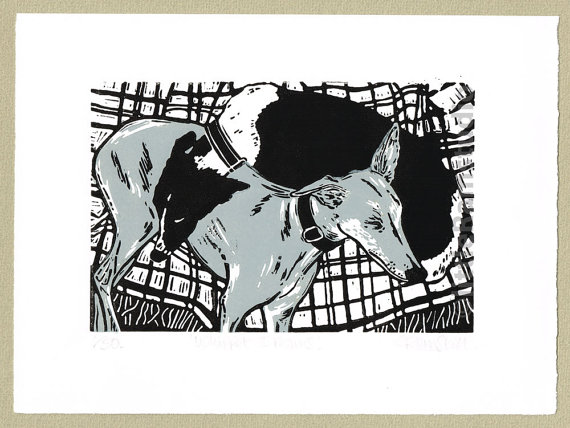
Never underestimate the importance of a dog’s top line. It’s a major part of breed type (can you imagine a Whippet with a level topline?) that can influence a dog’s ability to do it’s job, and it will impact a dog’s comfort as he plays, works, and ages.
Many breeds call for a level topline, but this is very breed specific. The Borzoi standard, for example, doesn’t use the word “topline” at all, and the length of a dog’s back is often dependent upon the breed’s purpose. A square dog is usually a smooth trotter, and being slightly longer than tall increases its speed. Long and low decreases the length of stride and speed, and this is what has made some breeds ideal for people who hunt on foot.
A dog that moves high in the rear for its breed often lacks proper reach in the front couple with an over angulated rear as compared to his front. Because the dog has to compensate to keep his hind legs on their forward drive from hitting his front legs with their shorter stride, his rear rises. But the Chesapeake Bay Retriever standard reads, “Topline should show the hindquarters to be as high as or a trifle higher than the shoulders.” We repeat: Proper toplines are determined by the dog’s breed.
The strength and health of a dog’s back is determined by having proper structure at the north and souths ends of the dog, but for its breed. Dogs aren’t Mr. Potato Heads that can have bits and pieces that can be inserted at will. A good top line isn’t something that can be bred for on all on its own.
We like the analogy written by C. Patrick Ormos in an article on top lines “…imagine a suspension bridge where the two support points are the shoulder assembly and the pelvis. Like any suspension bridge the “wires“ need to be tight to keep the bridge level. In this case, those “wires“ are the soft tissues which attach the shoulder assembly to the rib cage and vertebrae.”
To borrow a movie tile, “It’s Complicated.”
In a perfect world, evaluating a topline is ideally done on a wet dog so that the hair on a dog’s back (deceptive with its cowlicks, dips, “poofs” and rises) doesn’t fool us. How a dog is “stacked” or set up by her handler can also be deceptive because a clever handler can hide dramatic topline faults, while a poor handler can unwittingly create the appearance of a fault where one doesn’t really exist.
Do you know what’s correct for your dog’s breed?
Image: “Sleeping Whippet Dogs” by Gary and Heather from littleRamstudio
https://www.etsy.com/shop/littleRamstudio

Here is a series of pix showing a Borzoi topline from 5 weeks to 9 months of age.
Flexible top lines are crucial to the coursing hound.
Double suspension gallop demands flexibility.
Double suspension gallop